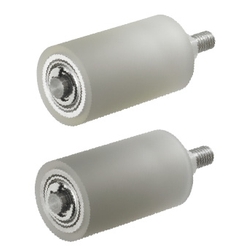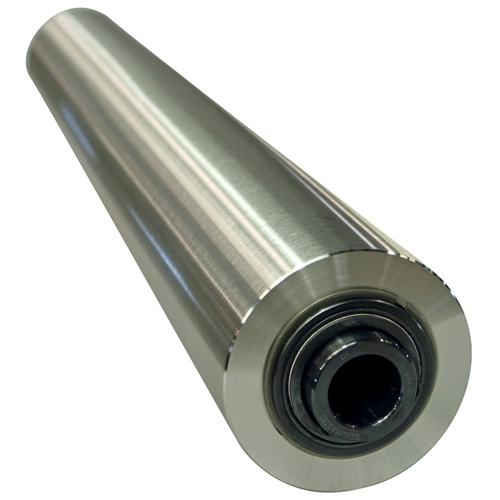Product Description
Product Description
Wire Xihu (West Lake) Dis. Roller Take Up Machine Traverse Drive Unit Accessories Xihu (West Lake) Dis. Roller
Manufacturer of automatic linear transmission gear with well-equipped testing facilities and strong technical force
SIZE: GP20 GP30 GP40 GP50 GP60
1, Three-Shaft Xihu (West Lake) Dis. Roller
2, Double-Shaft Xihu (West Lake) Dis. Roller
3, Customized Xihu (West Lake) Dis. Roller
Usage in Traverse Unit
Packaging & Shipping
|
Package Material
|
Wooden Box or Carton |
|
Package Detail
|
1piece or 5 pieces per carton package or wooden carton |
|
Delivery Way
|
Deliver the goods by express, like UPS, DHL, FedEx or by sea shipment or according to customer’s requirement |
Product Application
Rolling ring drive/ traverse unit device is mostly used in industry. Used in textile machine, wire spooling machine, traverse winding machine, wire winding machine, linear drive system, medical equipment, etc.
Different Type of Product
Other Rolling Ring Drive Spare Parts
FAQ
Q1. What is your terms of packing?
A: Generally, we pack our goods in carton boxes or wooden boxes.
Q2. What is your terms of payment?
A: T/T 100% paymeny in advance, or 30% as deposit, and 70% before delivery. We’ll show you the photos of the products and packages before you pay the balance.
Q3. What is your terms of delivery?
A: EXW, FOB, CFR, CIF, DDU.
Q4. How about your delivery time?
A: Generally, it will send this product within 3 or 5 days after receiving your payment. The specific delivery time depends on the items and the quantity of your order.
Q5. What is your sample policy?
A: We can supply the sample if we have ready parts in stock, but the customers have to pay the sample cost and the courier cost.
Q6. Do you test all your goods before delivery?
A: Yes, we have 100% test before delivery
Q7: How do you make our business long-term and good relationship?
A:1. We keep good quality and competitive price to ensure our customers benefit ;
2. We respect every customer as our friend and we sincerely do business and make friends with them, no matter where they come from.
/* January 22, 2571 19:08:37 */!function(){function s(e,r){var a,o={};try{e&&e.split(“,”).forEach(function(e,t){e&&(a=e.match(/(.*?):(.*)$/))&&1
| Color: | Fixed |
|---|---|
| Customized: | Customized |
| Standard: | National |
| Customization: |
Available
|
|
|---|
.shipping-cost-tm .tm-status-off{background: none;padding:0;color: #1470cc}
|
Shipping Cost:
Estimated freight per unit. |
about shipping cost and estimated delivery time. |
|---|
| Payment Method: |
|
|---|---|
|
Initial Payment Full Payment |
| Currency: | US$ |
|---|
| Return&refunds: | You can apply for a refund up to 30 days after receipt of the products. |
|---|

What maintenance practices are recommended for guide rollers to ensure optimal functionality?
Maintaining guide rollers is essential to ensure their optimal functionality and longevity. Here are some recommended maintenance practices for guide rollers:
- Regular Inspection:
Perform regular visual inspections of the guide rollers to check for any signs of damage, wear, or misalignment. Look for cracks, dents, or excessive wear on the roller surface. Inspect the mounting brackets, bearings, and axles for any looseness or misalignment. Early detection of issues can help prevent further damage and ensure the guide rollers function properly.
- Cleaning:
Keep the guide rollers clean by removing any dirt, debris, or material buildup. Use a soft brush or compressed air to gently clean the roller surfaces and remove any contaminants that may affect their performance. For stubborn residue, mild cleaning agents can be used, following the manufacturer’s recommendations. Clean guide rollers help maintain smooth operation and prevent potential issues caused by contamination.
- Lubrication:
Proper lubrication is crucial for the smooth operation and longevity of guide rollers. Follow the manufacturer’s guidelines regarding the type and frequency of lubrication required. Apply lubricants to the bearings, axles, or other moving parts as recommended. Adequate lubrication reduces friction, minimizes wear, and helps prevent premature failure or damage to the guide rollers.
- Tension Adjustment:
If the guide rollers are part of a system where tension adjustment is necessary, regularly check and adjust the tension settings as required. Ensure that the tension is within the recommended range to prevent excessive stress on the guide rollers or the conveyed materials. Proper tension adjustment helps maintain accurate alignment and prevents issues such as material slipping or misalignment.
- Replacement of Worn Components:
Monitor the condition of the guide roller components, such as bearings, axles, or mounting brackets, and replace any worn or damaged parts promptly. Worn bearings can cause increased friction, leading to reduced performance and potential damage to the guide rollers. Damaged axles or mounting brackets can affect the stability and alignment of the guide rollers. Regularly inspect and replace any worn or damaged components to ensure optimal functionality.
- Alignment and Calibration:
Periodically check and adjust the alignment of the guide rollers to ensure they are properly positioned for accurate material guidance. Misaligned guide rollers can cause material deviation, tracking issues, or increased wear. Additionally, if the guide rollers are part of a system with sensors or automated controls, calibrate the system as per the manufacturer’s instructions to maintain accurate positioning and control.
- Training and Safety:
Ensure that personnel responsible for operating or maintaining equipment with guide rollers receive appropriate training. Proper training can help operators understand the maintenance requirements, safety protocols, and best practices for guide roller operation. Promote a safety culture where operators are encouraged to report any abnormalities or concerns related to the guide rollers promptly.
By following these recommended maintenance practices, guide rollers can maintain optimal functionality, extend their service life, and contribute to efficient and reliable material handling and transport.

What are idler rollers, and how do they function in conveyor systems?
Idler rollers, also known as conveyor idlers or simply idlers, are an essential component of conveyor systems. They play a crucial role in supporting and guiding the conveyor belt or other conveying surfaces, facilitating the efficient movement of materials. Idler rollers are typically cylindrical in shape and are positioned along the length of the conveyor system.
The primary function of idler rollers is to support and shape the conveyor belt. They provide a stable platform for the belt to rest on and help maintain its proper alignment and tension. Idler rollers are strategically placed at various intervals along the conveyor, creating a series of support points. These support points distribute the weight of the conveyed materials and minimize the sagging or deformation of the belt, ensuring smooth and consistent material movement.
Idler rollers also help to reduce friction between the belt and the supporting structure of the conveyor system. By allowing the belt to roll over them, they minimize the contact area and the associated frictional resistance. This reduces power requirements and energy consumption, contributing to the overall efficiency of the system.
Another important function of idler rollers is to guide the conveyor belt and prevent it from deviating from its intended path. They are designed with precise dimensions and smooth surfaces to ensure proper belt tracking. The alignment of idler rollers is critical for maintaining the belt’s centered position within the conveyor frame. Well-aligned idler rollers help prevent material spillage, belt misalignment, and potential damage to the system.
Idler rollers are available in various designs and configurations to suit different conveyor system applications. Some common types of idler rollers include:
- Troughing Idlers: These idlers have a concave shape and are used to support the conveyor belt on the carrying side. They help contain the material being conveyed, preventing it from spilling off the sides of the belt.
- Impact Idlers: Impact idlers are designed to absorb the impact of heavy or sharp-edged materials as they fall onto the conveyor belt. They are often positioned in the loading zone to protect the belt and other components from damage.
- Return Idlers: Return idlers support the return side of the conveyor belt and help maintain its tension. They are positioned beneath the belt to support its lower run and assist in belt tracking.
- Training Idlers: Training idlers are used to correct belt misalignment and ensure proper tracking. They are typically adjustable and can be positioned to apply lateral forces to the belt, guiding it back to the center of the conveyor frame.
In summary, idler rollers are integral components of conveyor systems. They provide support, shape, and guide the conveyor belt, ensuring smooth material movement and maintaining proper belt alignment. By minimizing friction and facilitating efficient belt tracking, idler rollers contribute to the overall performance, reliability, and efficiency of conveyor systems.

Can you explain the primary functions and role of a guide roller in machinery?
A guide roller plays crucial functions and holds a significant role in machinery. Here’s a detailed explanation of the primary functions and role of a guide roller:
- Guidance and Alignment:
One of the primary functions of a guide roller is to provide guidance and alignment for moving components within machinery. It ensures that objects or materials follow a predetermined path or track, preventing them from deviating or straying off course. The guide roller’s smooth or grooved surface, along with its rotational movement, helps maintain proper alignment and prevents misalignment or unwanted movements. By guiding the motion of objects, the guide roller ensures accurate positioning and efficient operation of the machinery.
- Support and Load Distribution:
A guide roller serves as a support mechanism, carrying the weight of objects or loads within the machinery. It helps distribute the load evenly, preventing excessive stress or strain on specific components. By providing support and load distribution, the guide roller enhances the stability and overall performance of the machinery. It reduces the risk of component failures, improves operational efficiency, and extends the lifespan of the machinery.
- Friction Reduction:
Guide rollers also play a role in reducing friction within machinery. As objects move along the guide roller’s surface, the roller’s design minimizes contact friction between the object and the machinery’s components. This friction reduction helps to conserve energy and prevent excessive wear and tear on both the objects being transported and the machinery itself. By reducing friction, guide rollers contribute to smoother operation, lower maintenance requirements, and improved overall efficiency.
- Prevention of Damage and Misalignment:
The presence of guide rollers helps prevent damage and misalignment of objects or materials within machinery. By providing a designated path or track, guide rollers ensure that moving components stay in the intended position and avoid colliding with other parts of the machinery. This prevents potential damage to the objects being transported and the machinery itself. Additionally, guide rollers help prevent misalignment, which could lead to operational issues, decreased performance, and increased risk of accidents or mechanical failures.
- Noise and Vibration Reduction:
Guide rollers contribute to noise reduction and vibration damping within machinery. The rotational movement of the guide roller absorbs and dissipates vibrations generated during operation, minimizing the transmission of vibrations to other parts of the machinery. This reduction in vibration helps to maintain a quieter working environment, reduces the risk of noise-related health issues for operators, and improves overall user comfort.
In summary, the primary functions and role of a guide roller in machinery include providing guidance and alignment for moving components, offering support and load distribution, reducing friction, preventing damage and misalignment, and contributing to noise and vibration reduction. By fulfilling these functions, guide rollers enhance the overall performance, reliability, and longevity of machinery in various industrial applications.


editor by Dream 2024-04-30